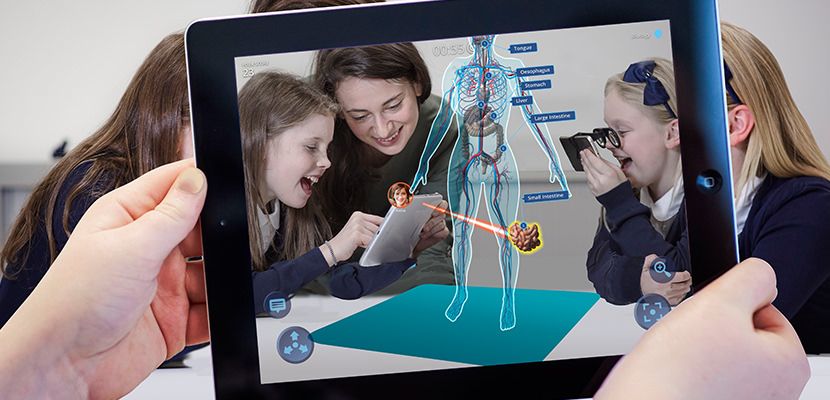
Augmented Reality (AR) has brought a significant revolution in the tech world, influencing various industries, including education. The emergence of AR technology has paved the way for integrating it into educational gaming apps, transforming the learning experience for students of all ages. This article delves into the benefits and potential of augmented reality in educational gaming apps.
1. Enhancing Engagements and Interactivity
One of the primary advantages of integrating augmented reality in educational gaming apps is the ability to enhance student engagement and interactivity. Traditional lecture-style learning often fails to capture students’ attention, leading to disinterest and a lack of motivation. By incorporating AR elements, educational gaming apps create an immersive and interactive environment for students to explore concepts, making the learning process more enjoyable.
Through AR, students can visualize complex subjects and interact with virtual objects, merging the virtual world with the real one. For example, an astronomy app could allow students to point their device at the night sky and instantly see constellations overlaid with relevant information. This hands-on experience fosters curiosity and deepens understanding.
2. Real-World Simulations
Another significant advantage of augmented reality in educational gaming apps is the ability to create real-world simulations. AR allows students to practice and apply their knowledge in realistic environments. For instance, language learning apps can overlay virtual signs and objects in different languages over real-world streets and buildings, immersing students in a foreign language context, virtually providing them with the experience of being in another country.
By simulating real-world scenarios, students can gain practical skills and develop problem-solving abilities. This interactive approach encourages student autonomy, critical thinking, and creativity, preparing them for real-life situations they may encounter in their future careers.
3. Personalized Learning Experience
A key aspect of augmented reality in educational gaming apps is the flexibility to tailor the learning experience to each student’s needs. AR technology can adapt to individual learning styles and pace, ensuring a personalized approach to education.
Through data analysis and AI algorithms, educational gaming apps can track students’ progress and render suitable challenges or provide additional assistance based on their performance. This adaptive learning system helps students stay motivated, engaged, and challenged at an optimal level, maximizing their learning potential.
4. Collaboration and Social Learning
Augmented reality in educational gaming apps also promotes collaboration and social learning. By connecting multiple devices or through online platforms, students can interact and collaborate with peers, even if they are physically apart.
AR gaming apps can encourage cooperative problem-solving activities, where students work together to solve puzzles or complete educational challenges. This collaborative aspect fosters teamwork skills, communication, and respect for diverse viewpoints, preparing students for a future where effective collaboration is crucial for success.
5. Bridging the Gap between Theory and Practice
Often, students struggle to bridge the gap between theoretical concepts taught in classrooms and their practical applications in the real world. Augmented reality in educational gaming apps helps overcome this challenge by providing a tangible connection between theory and practice.
AR allows students to actively engage with visual representations and manipulate virtual objects, providing a direct link between abstract concepts and real-world implications. It enables students to grasp and internalize knowledge by experiencing its practical applications, paving the way for a deeper understanding and long-term retention.
Conclusion
Augmented reality has emerged as a powerful tool in revolutionizing education. By integrating AR into educational gaming apps, students can benefit from enhanced engagement, real-world simulations, personalized learning experiences, collaboration, and a better understanding of theoretical concepts.
As technological advancements continue, the potential of augmented reality in educational gaming apps is vast. It opens up new horizons for interactive and immersive learning experiences, creating a generation of students who are well-prepared for the challenges of the future.


